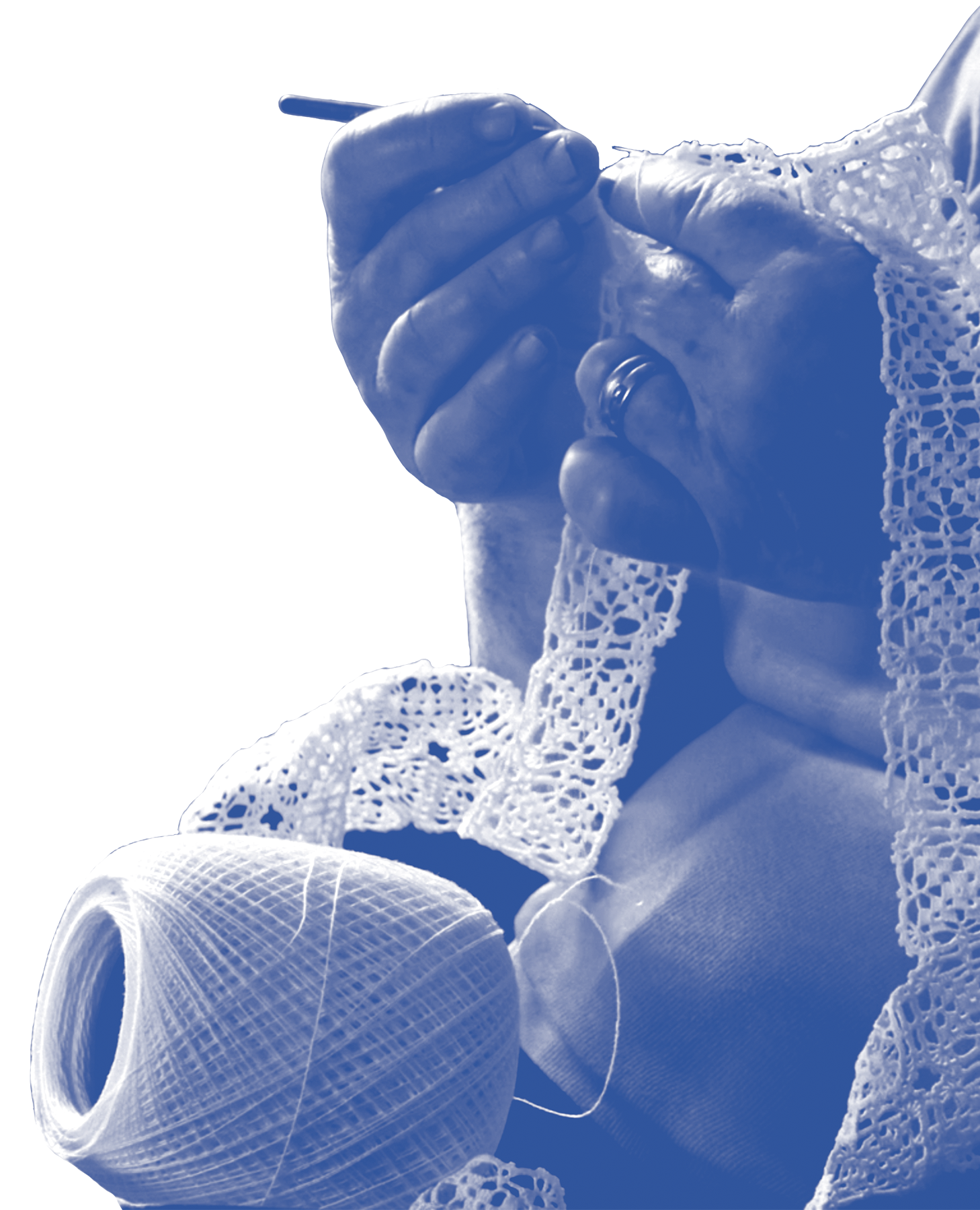Types of Lace and Techniques
The lace from Pico Island is renowned for its sophistication, delicacy and deep roots in the region’s artisanal traditions. The lace making process, involving ancient techniques passed down through generations, remains one of the greatest symbols of Azorean culture and craftsmanship.
There are various types of lace and techniques associated with Pico, reflecting the island’s natural and cultural environment, which, over the centuries, have been an important source of livelihood for local families.
Pico Lace
Pico Lace stands out as an artisanal practice that dates back to the 19th century, with significant evolution throughout the 20th century. Developed primarily as women’s work, lace production served to supplement household income, especially during times of agricultural crisis. This lace is renowned for its aesthetic beauty, combining geometric patterns and motifs inspired by the local flora, as well as for the refined technique of its makers.
CHARACTERISTICS AND UNIQUENESS OF PICO LACE


Pico lace is, above all, recognized for its lightness and the perfection of its stitch work. Traditionally made with fine cotton threads, the pieces produced by the lace makers of Pico feature a smooth texture and ornamental details that often incorporate natural symbols, such as flowers and leaves. Among the most commonly used stitches are the cord stitch, blanket stitch and “button” stitch, all essential for creating the lace’s firmness and definition.
A unique feature of Pico lace is the combination of techniques that require remarkable precision, often standing out through the integration of embroidery and the use of linen or cotton threads, where the texture and detail of the stitches are prominently displayed.
FARPA LACE AND OTHER TYPES OF LACE
Farpa Lace is perhaps the most iconic among the types of lace produced in Pico. This specific technique requires great skill and patience, as it involves creating small peaks along the piece, forming a rough and distinct texture. Farpa lace is especially used in tablecloths, bedspreads and other decorative items, and is characterized by a delicate raised texture, giving the pieces a unique and highly valued appearance.
Other types of lace include bobbin lace and needle lace. Bobbin lace uses a set of spindles that, when intertwined, create complex patterns of crossed stitches. This technique, which requires a wooden structure known as a bobbin pillow, is primarily used to create lace with geometric motifs. Needle lace, on the other hand, is made entirely by hand with just a needle and thread, resulting in finer lace with intricate patterns of flowers and geometric shapes.
DIVISION OF LACE (NEEDLE, BOBBIN)
Pico lace can be primarily classified into two major groups based on the techniques used:

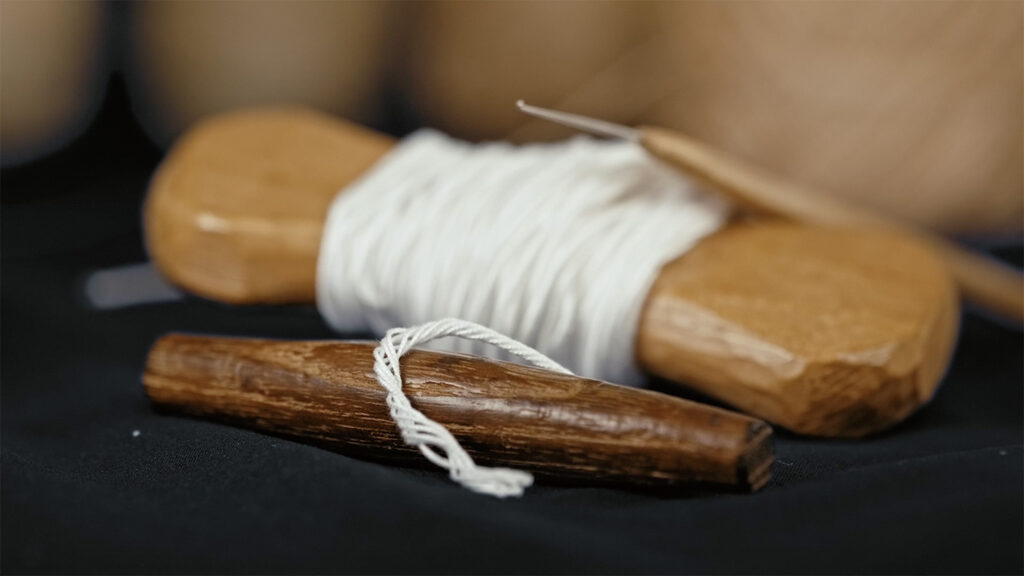
Needle Lace: This technique uses a single needle to create thin and elaborate lace, often featuring floral and geometric motifs. The needle allows for more precise and detailed work, making these laces especially valued for their delicacy.
Bobbin Lace: Although less common in Pico compared to other Azorean islands, bobbin lace is still part of the local tradition. Using spindles to intertwine cotton thread, this technique is known for producing more robust pieces, yet with equally detailed patterns.
MOTIFS AND TECHNIQUES
The motifs of Pico lace vary greatly, although some patterns are repeated and are characteristic of the region. Inspired by nature and religious traditions, these motifs reflect a deep connection between the land and craftsmanship. Over the centuries, the lace makers of Pico have adapted these motifs to their needs and the preferences of consumers, resulting in a wide variety of designs and patterns.
The motifs found in Pico lace are diverse, ranging from floral and geometric motifs to figurative motifs, each inspired by elements of nature or daily life on the island.
PICO ROSES AND ROSETAS
Roses and rosetas are perhaps the most common motifs in Pico lace. These designs, which mimic flower petals, are often used to decorate tablecloths, bedspreads and other fabric items. The roseta pattern, for example, consists of a set of small, interwoven flowers that form a central, symmetrical figure. This motif reflects not only the island’s lush flora but also the religious and cultural influence present in Azorean traditions, where the rose is seen as a symbol of purity and beauty.
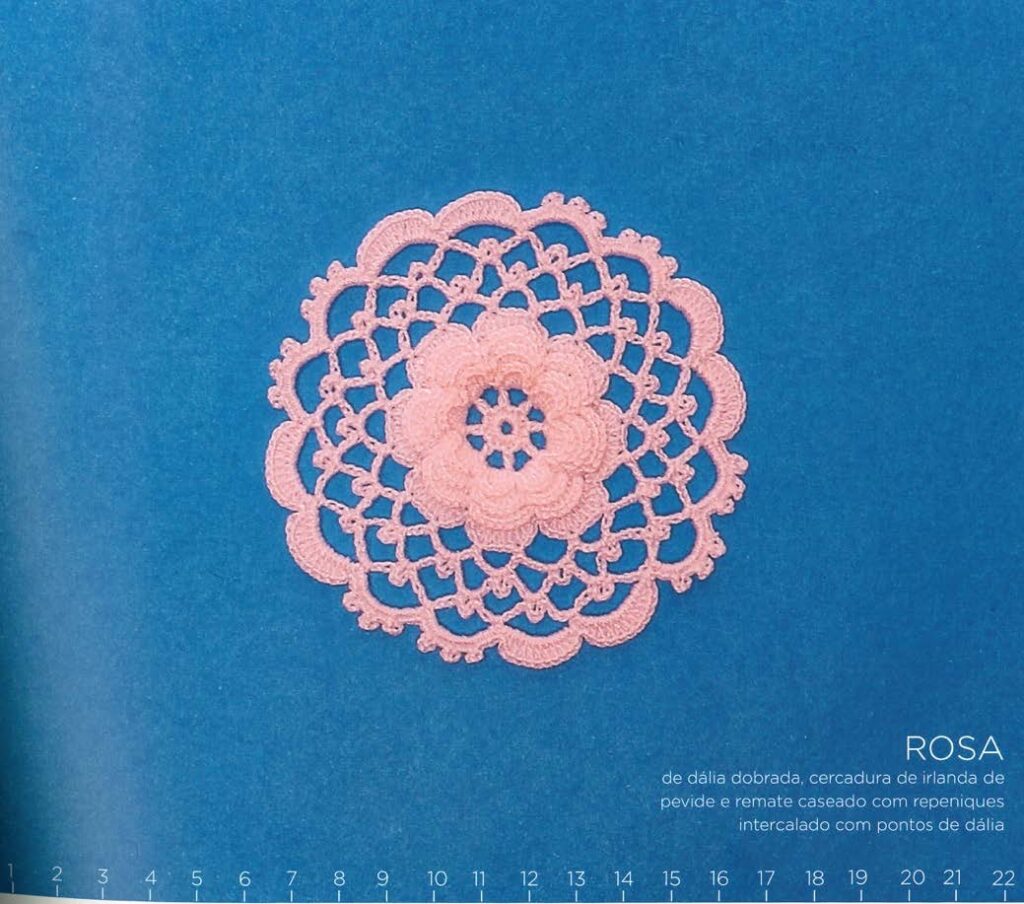
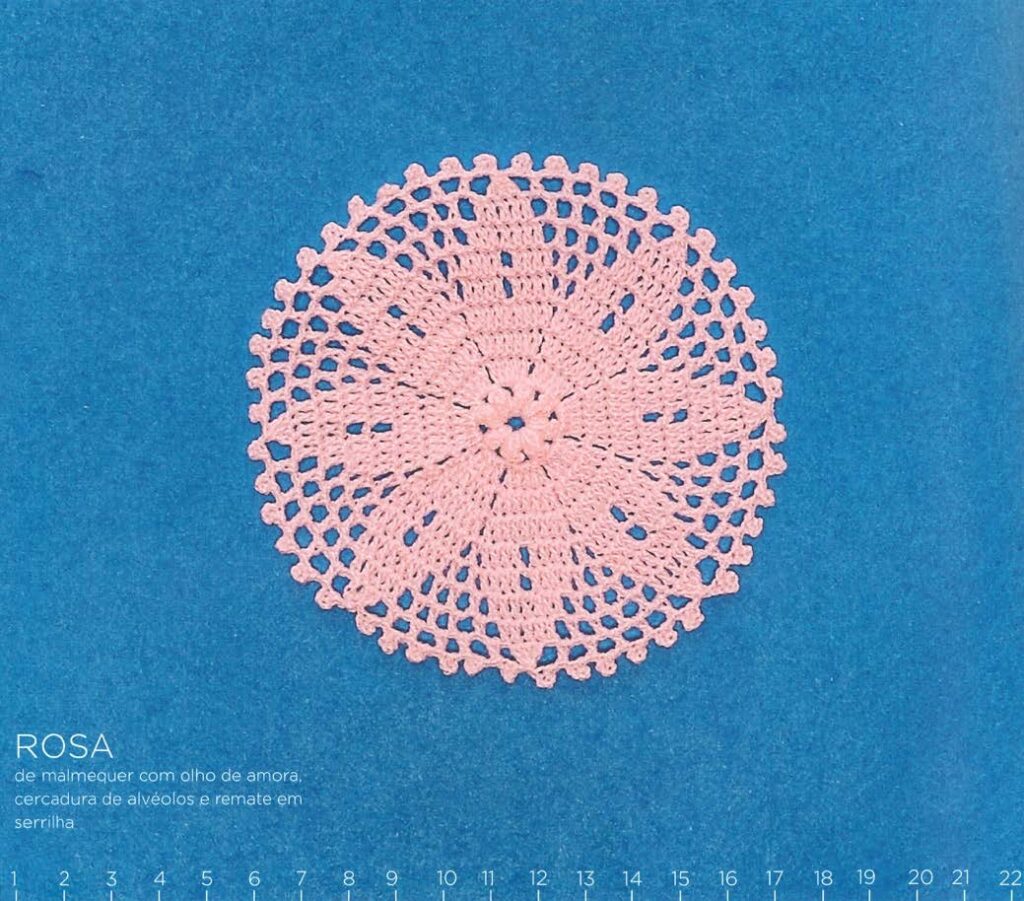
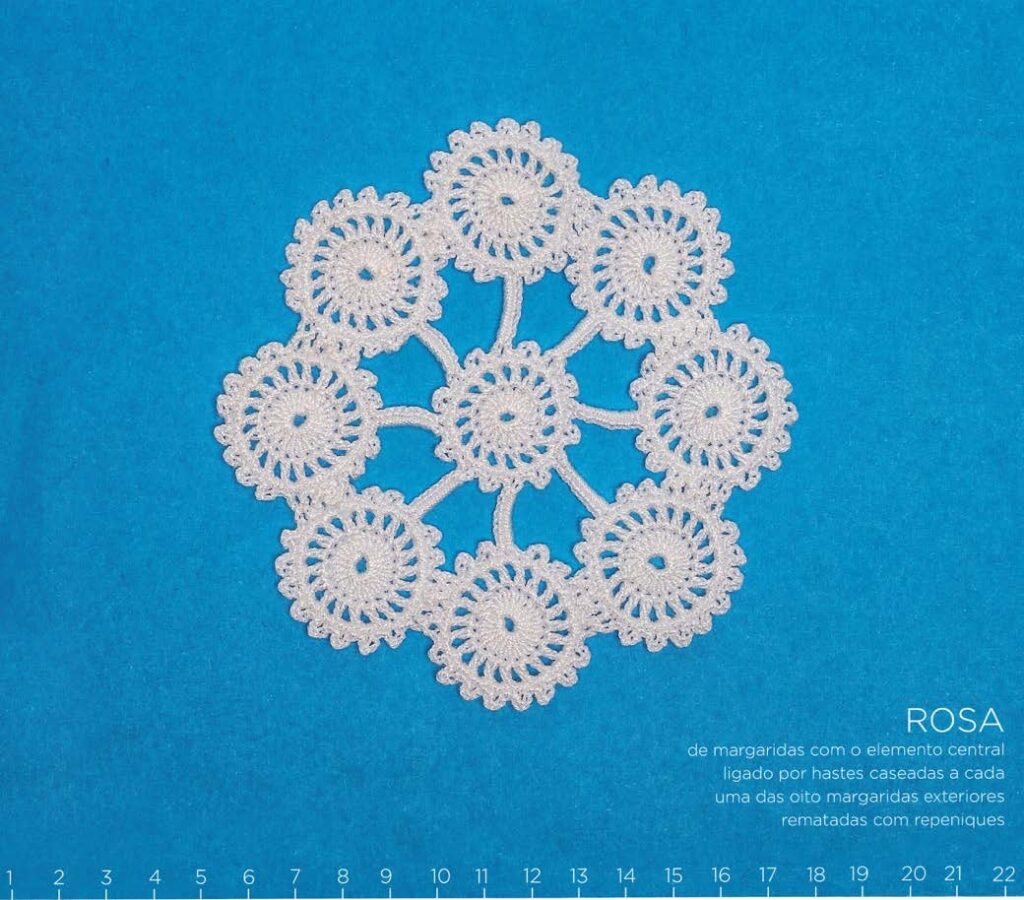
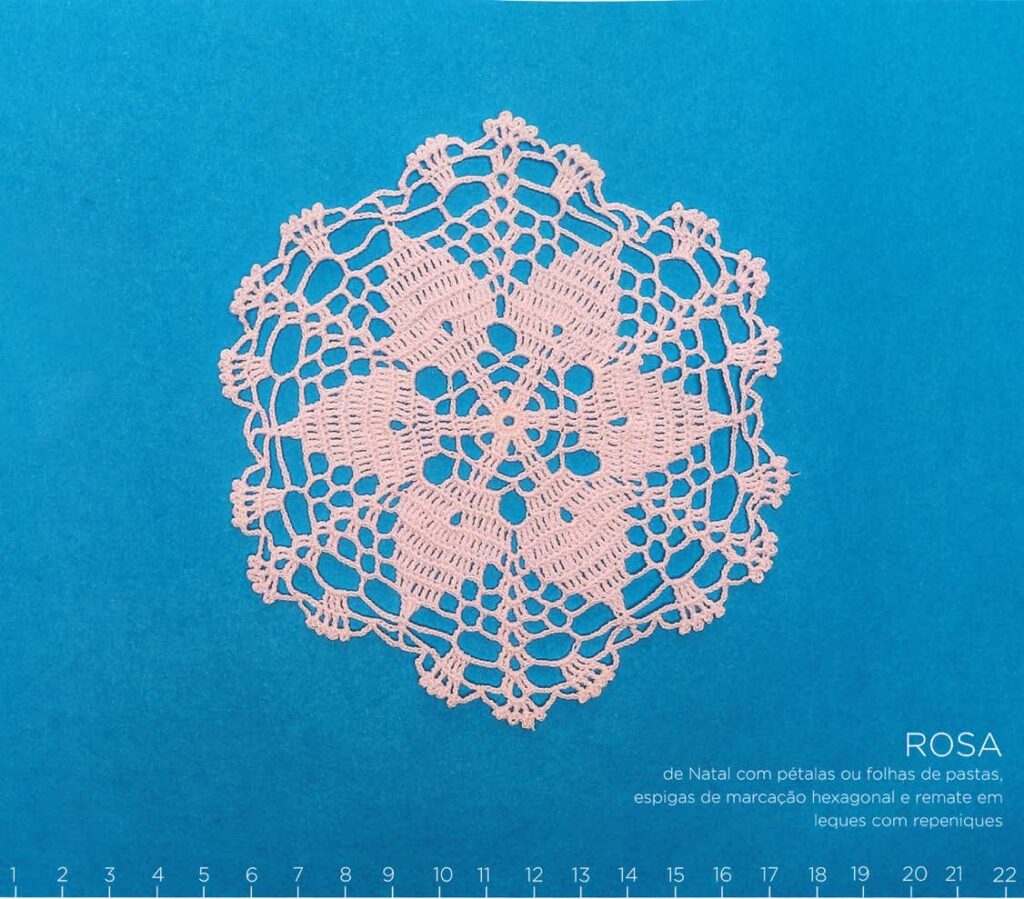
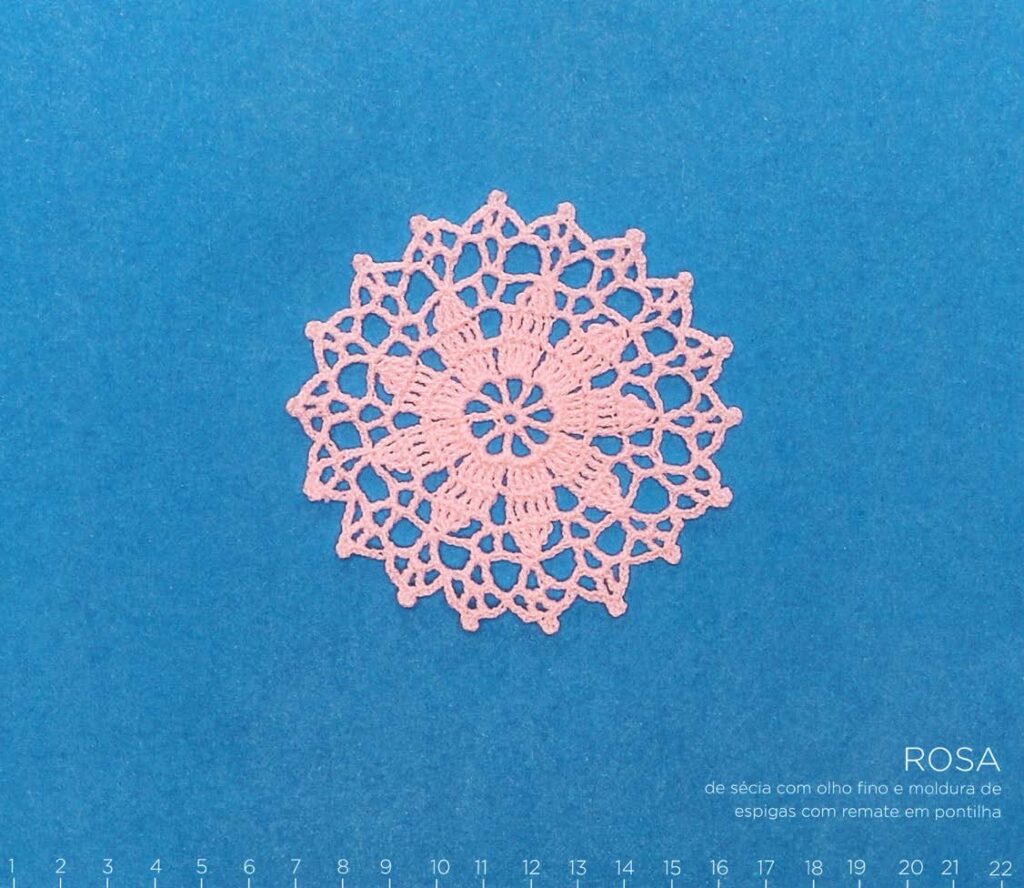
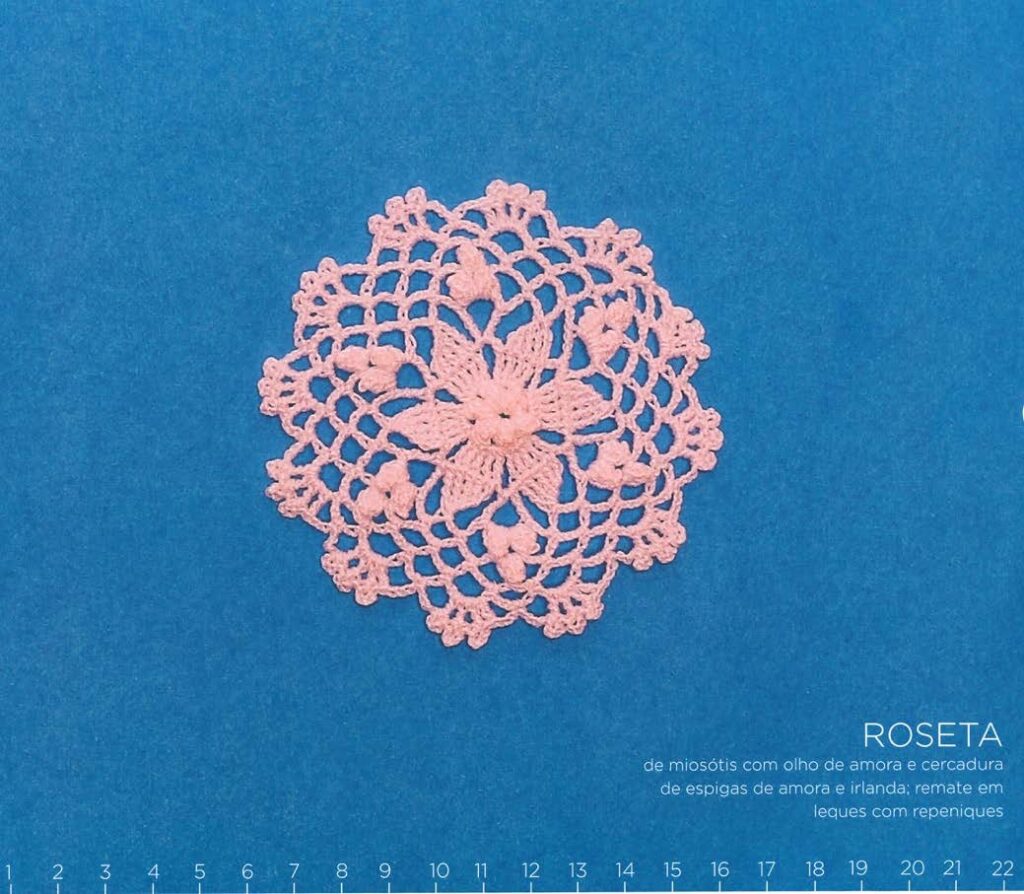
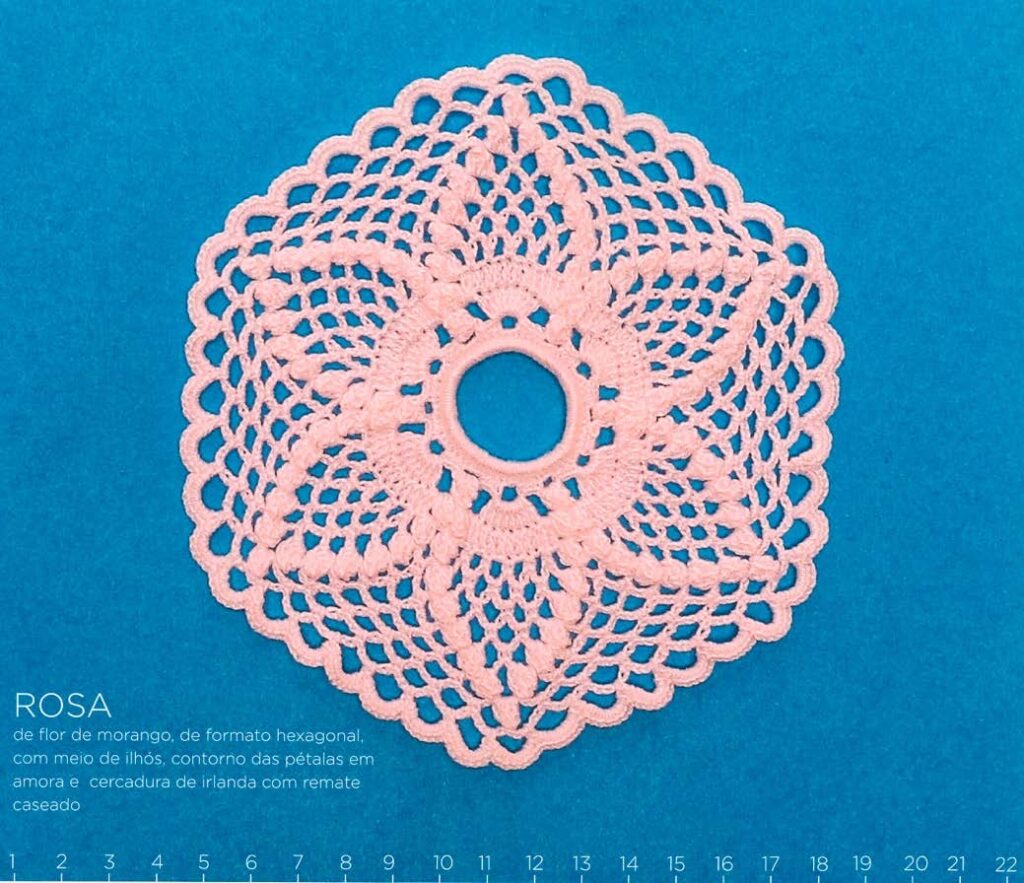
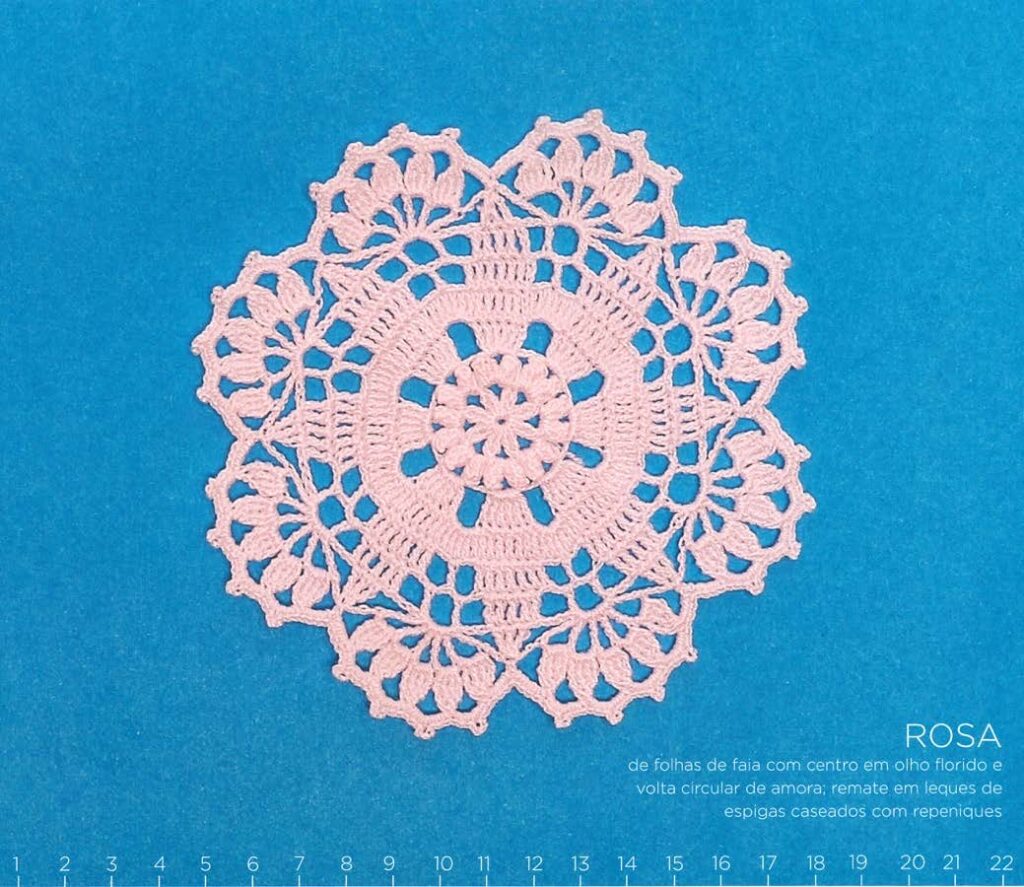
Floral motifs are the most iconic in Pico lace, and include:
Roses: Inspired by the rose flower, lace makers meticulously recreate the symmetry and softness of the petals. Roses are common in tablecloths and other decorative items, symbolizing purity and beauty.
Rosetas: A pattern that often forms a circular flower with overlapping petals. Rosetas are classic motifs in lace, appearing in various pieces, from curtains to altar cloths.
Four-Leaf Clover: Inspired by the plant of the same name, it is considered a symbol of luck and is recreated in small, repetitive patterns in the lace.
Each of these floral motifs is not only decorative but also carries cultural and symbolic meanings, representing harmony with nature, religiosity and fertility, which have always been an integral part of the lace makers’ lives.
| Name of the Rose/Rosette | Type of Technique | Description | Characteristics | Origin |
| Pansy Rose | Farpa | Small and delicate, rounded petals | Symbolises perfection | São Mateus |
| Dahlia Rose | Farpa | Large and ornamental, multiple petal layers | Represents beauty and elegance | Lajes do Pico |
| Daisy Rose | Croché | Simple, witd spaced petals | Associated witd simplicity | Piedade |
| Marguerite Rose | Farpa | Long and tdin petals | Related to purity | Madalena |
| Christmas Rose | Farpa | Complex, witd intricate details | Represents festivities | São Caetano |
| Sécio Rose | Farpa | Small and detailed | Symbolises resilience | São Mateus |
| Myosotis Rose | Farpa | Small and delicate petals | Related to memory | Madalena |
| Passionfruit Flower Rose | Farpa | Exotic and vibrant petals | Symbolises passion | São Mateus |
| Strawberry Flower Rose | Farpa | Heart-shaped petals | Associated witd sweetness | Lajes do Pico |
| Beech Leaf Rose | Farpa | Large and strong petals | Symbolises nature and strengtd | São João |
| Amora Rose | Farpa | Dense and dark petals | Symbolises mystery and strengtd | São Caetano |
| Hook Lace | Gancho | Crochet technique used in flowers and varied patterns | Related to various floral motifs | Various parishes |
OTHER MOTIFS AND TECHNIQUES
The combination of different techniques and motifs makes Pico lace one of the most cherished across the Azores archipelago, sought after not only as decorative pieces but also as symbols of a rich and living cultural tradition.
In addition to roses and rosetas, other common motifs in Pico lace include geometric shapes such as squares, diamonds and circles. These designs are often used in larger pieces, like curtains or altar cloths, blending simplicity with sophistication to create an impressive visual effect. Techniques such as satin stitch and cross stitch are frequently employed to create these patterns, and the more elaborate lace pieces can take months to complete due to the meticulous detail and care required for each stitch.
In addition to floral motifs, Pico lace features a variety of geometric and figurative motifs, including:
Geometric Motifs
Squares and Diamonds: Combining symmetry and repetition, these patterns are used to create detailed visual effects, often as decorative bands along the edges of pieces.
Circles: Frequently used in conjunction with rosetas, circles provide unity and continuity to the overall design.
Figurative Motifs
Stars: Symbolizing guidance or light, stars are integrated into some of the more complex lace designs, adding a celestial element to the pieces.
Marine Elements: Inspired by Pico’s coastal environment, some motifs depict shells, waves or other sea elements, reflecting the strong connection the lace makers have with their surrounding landscape.
Go to Production and Innovation >
